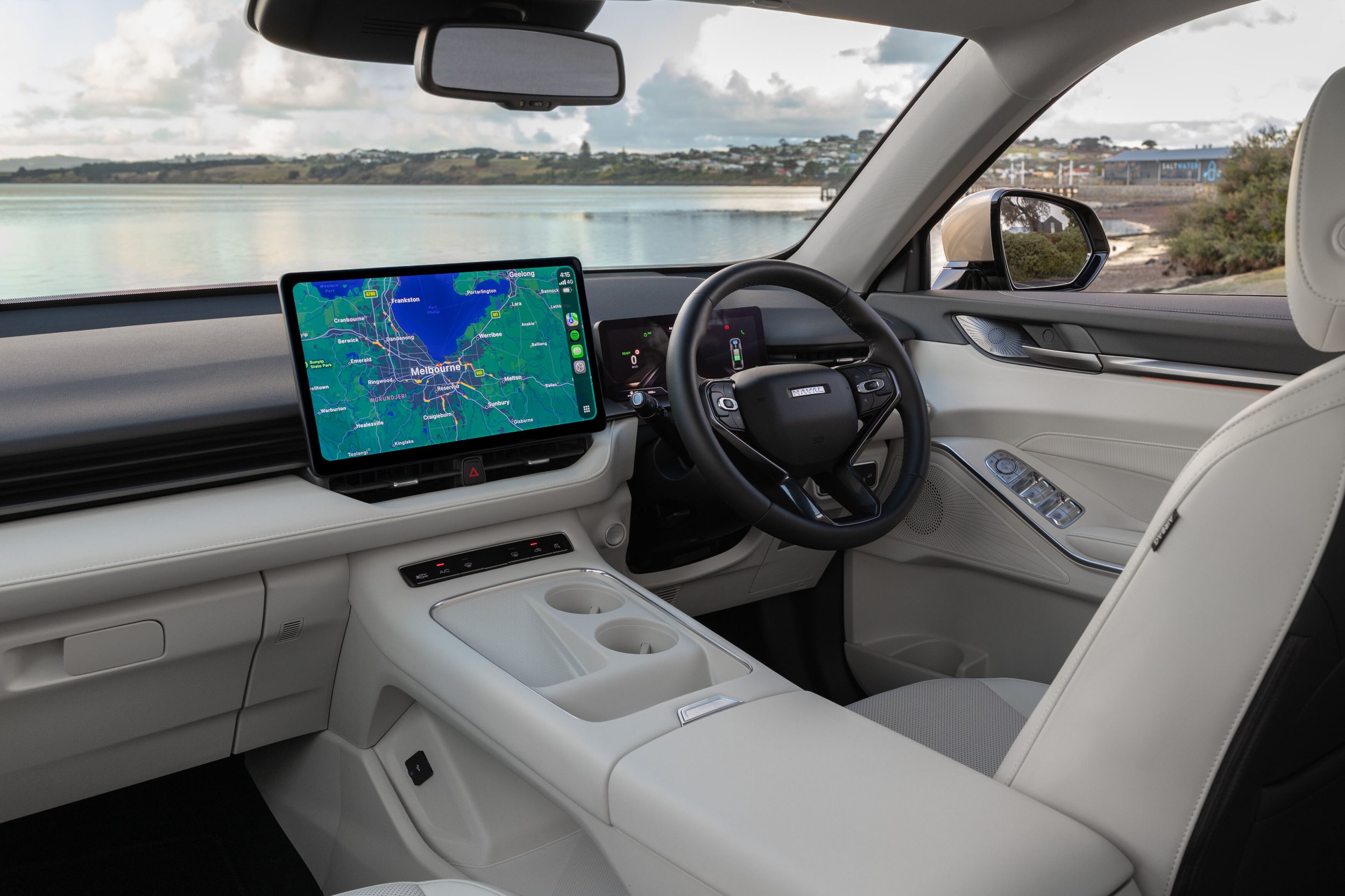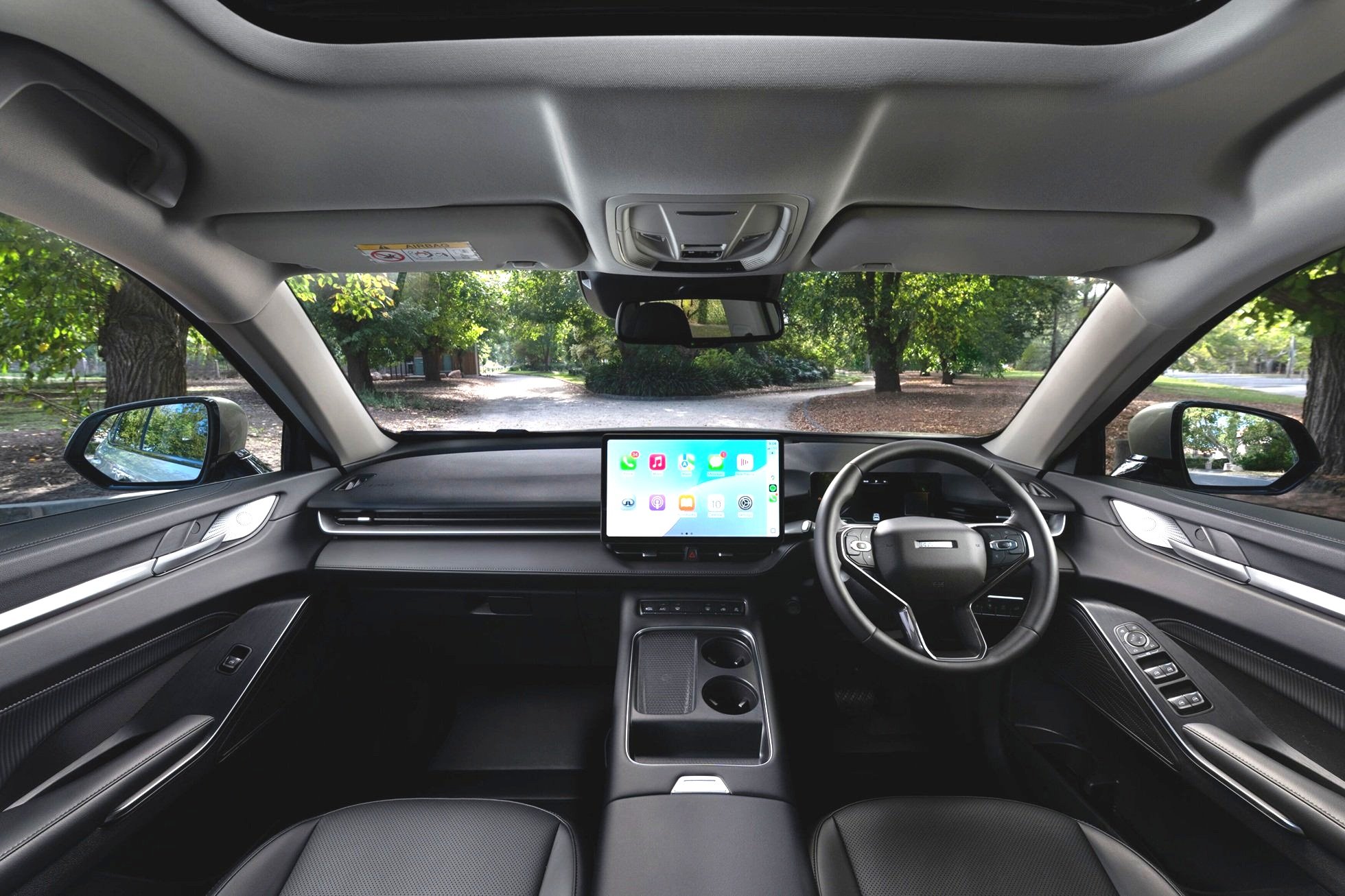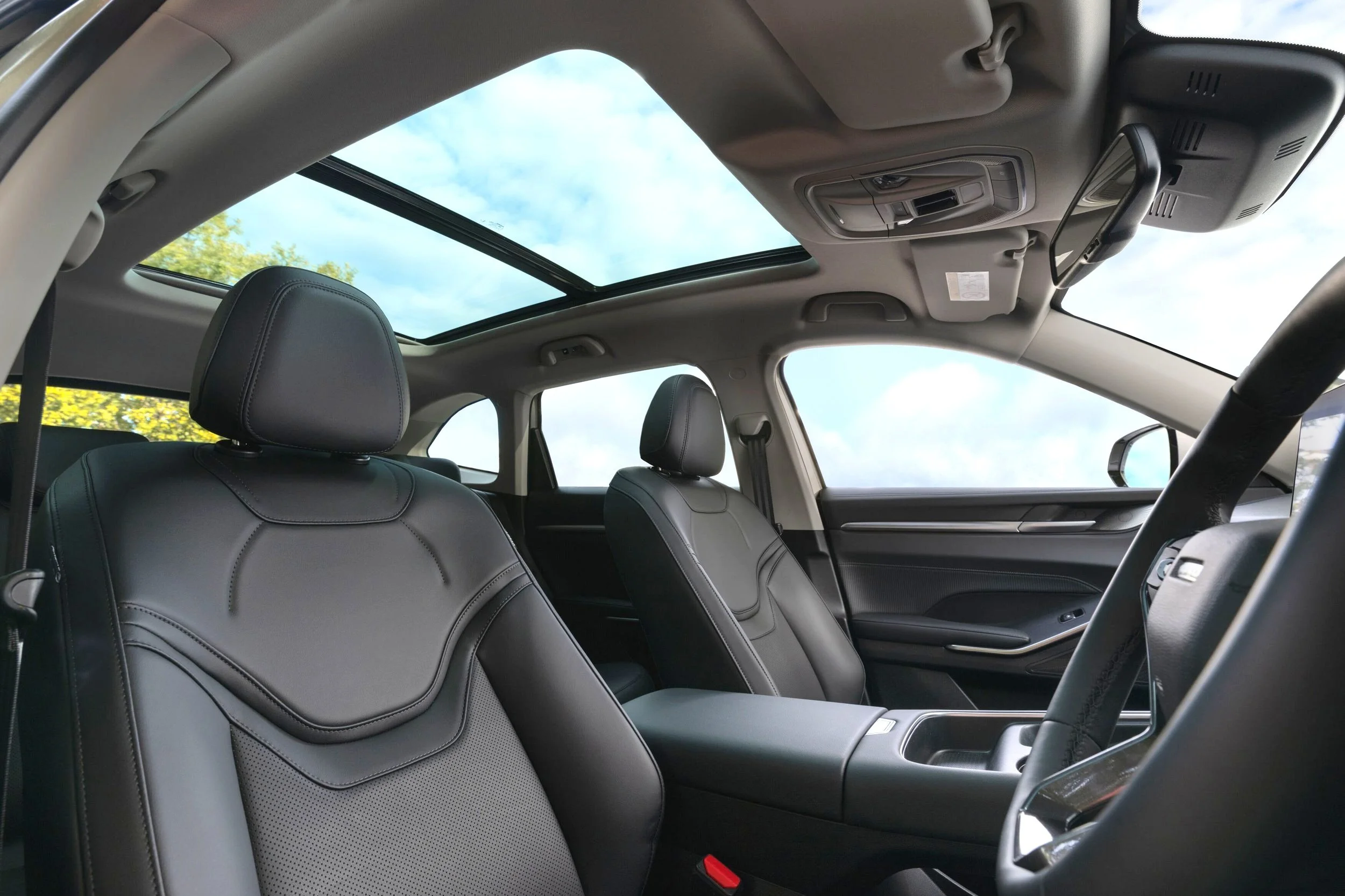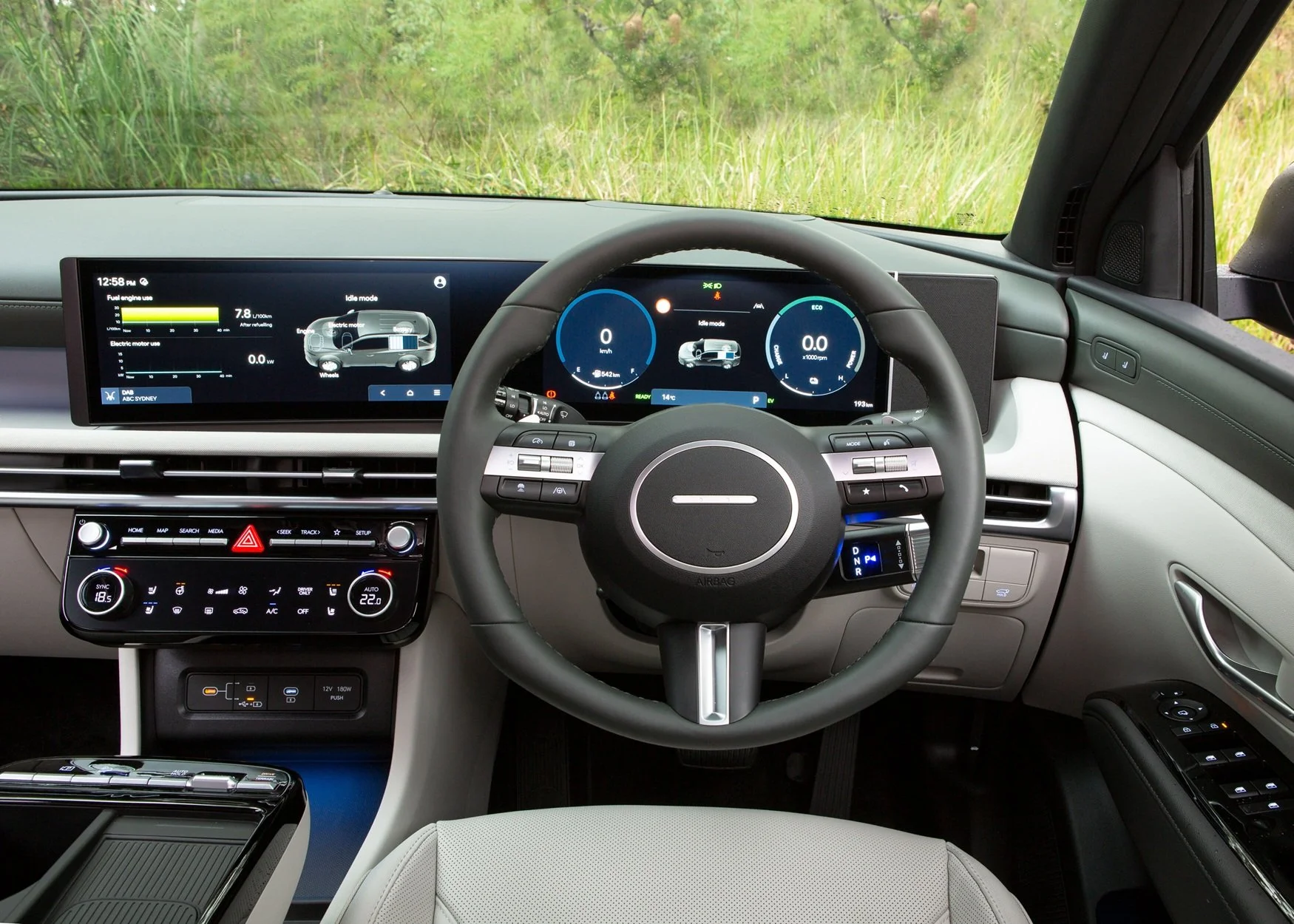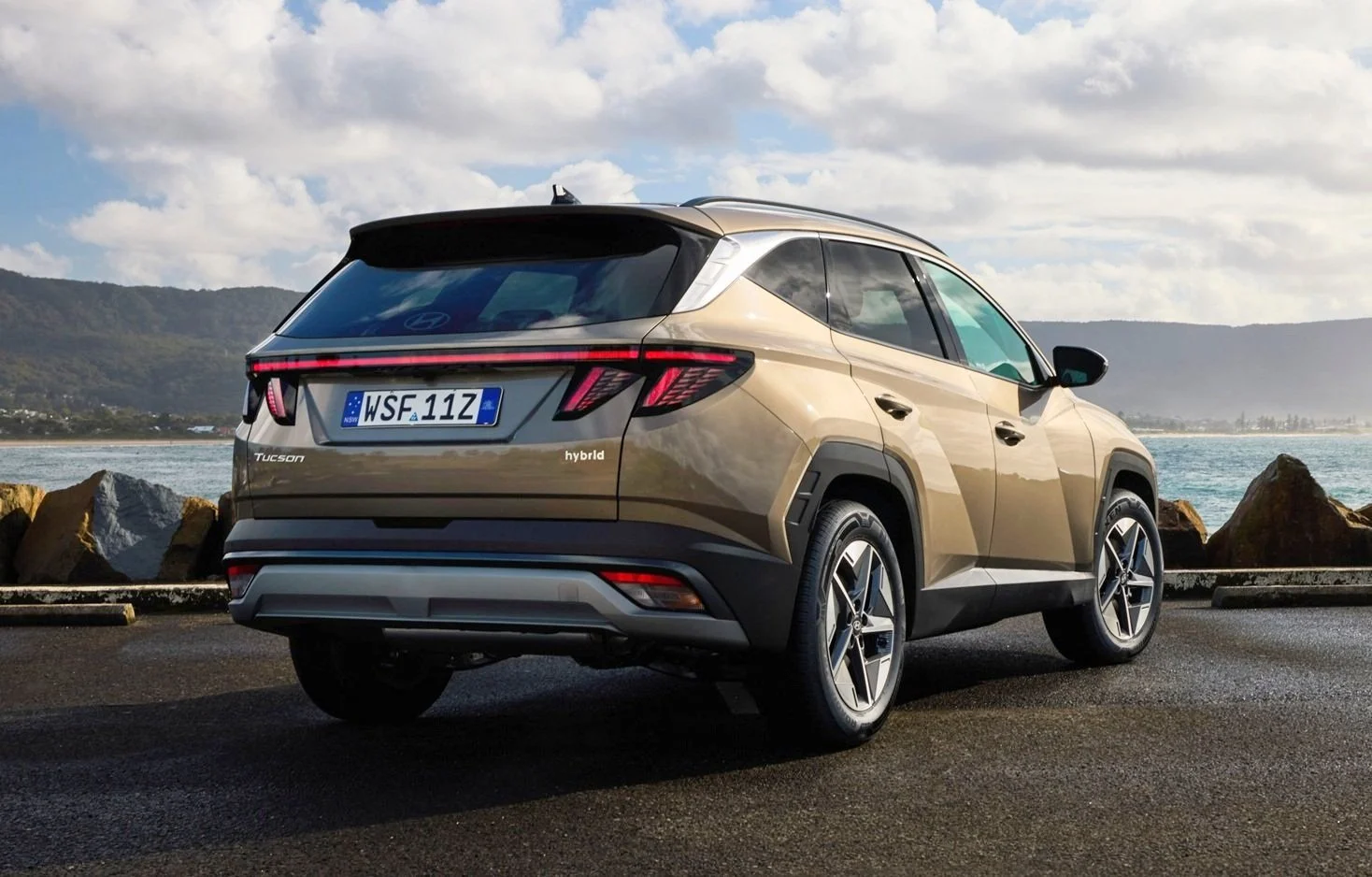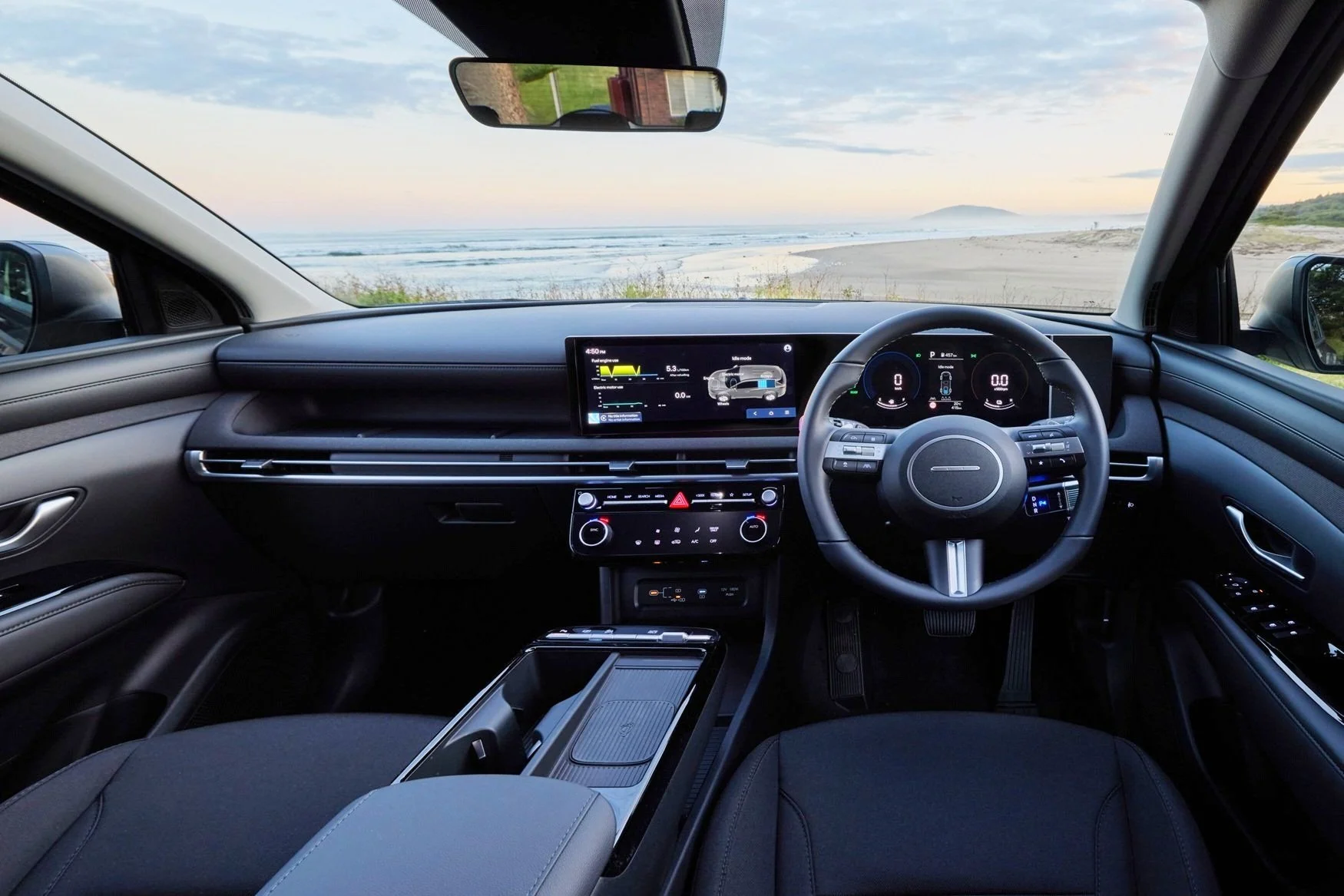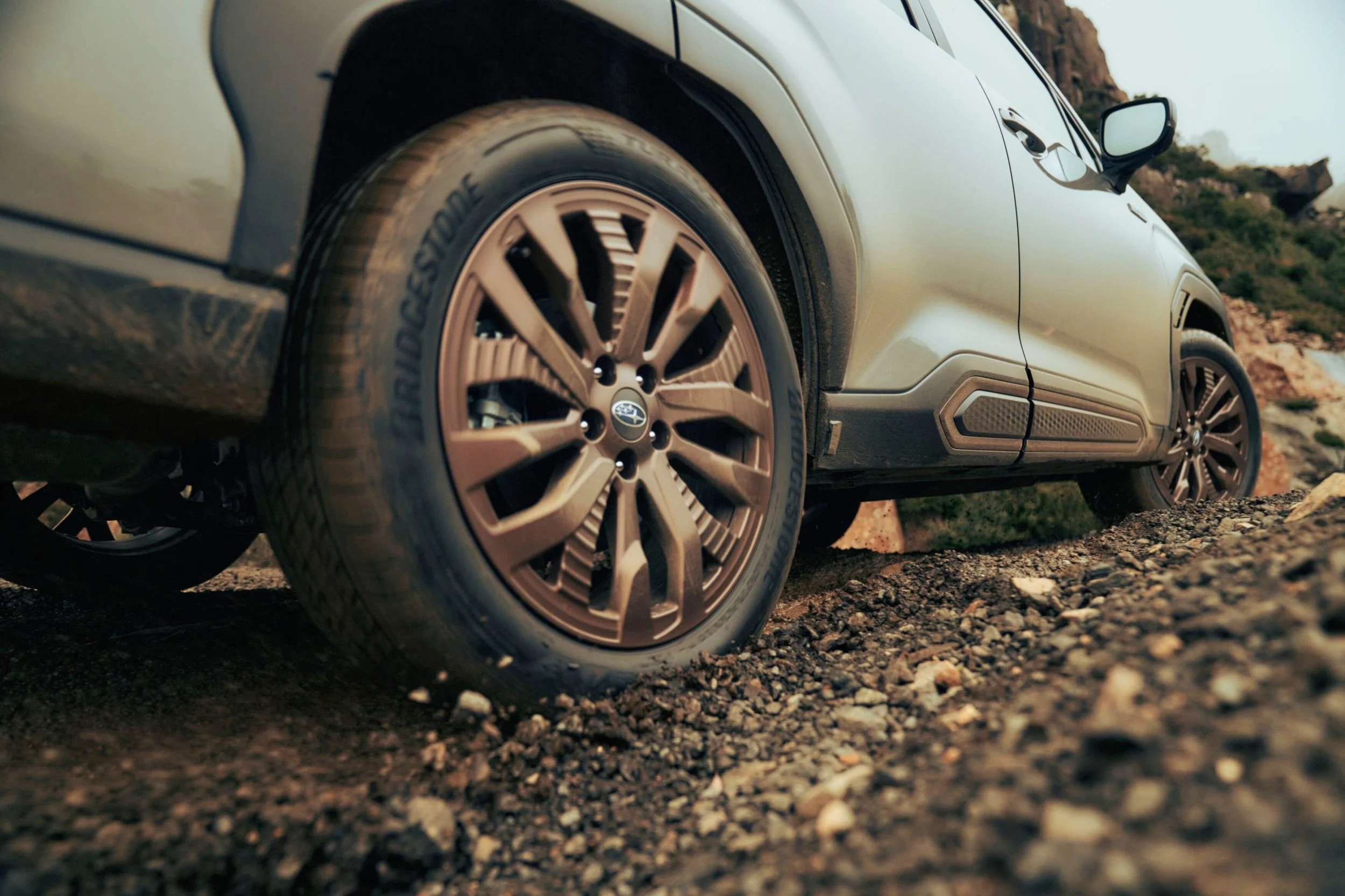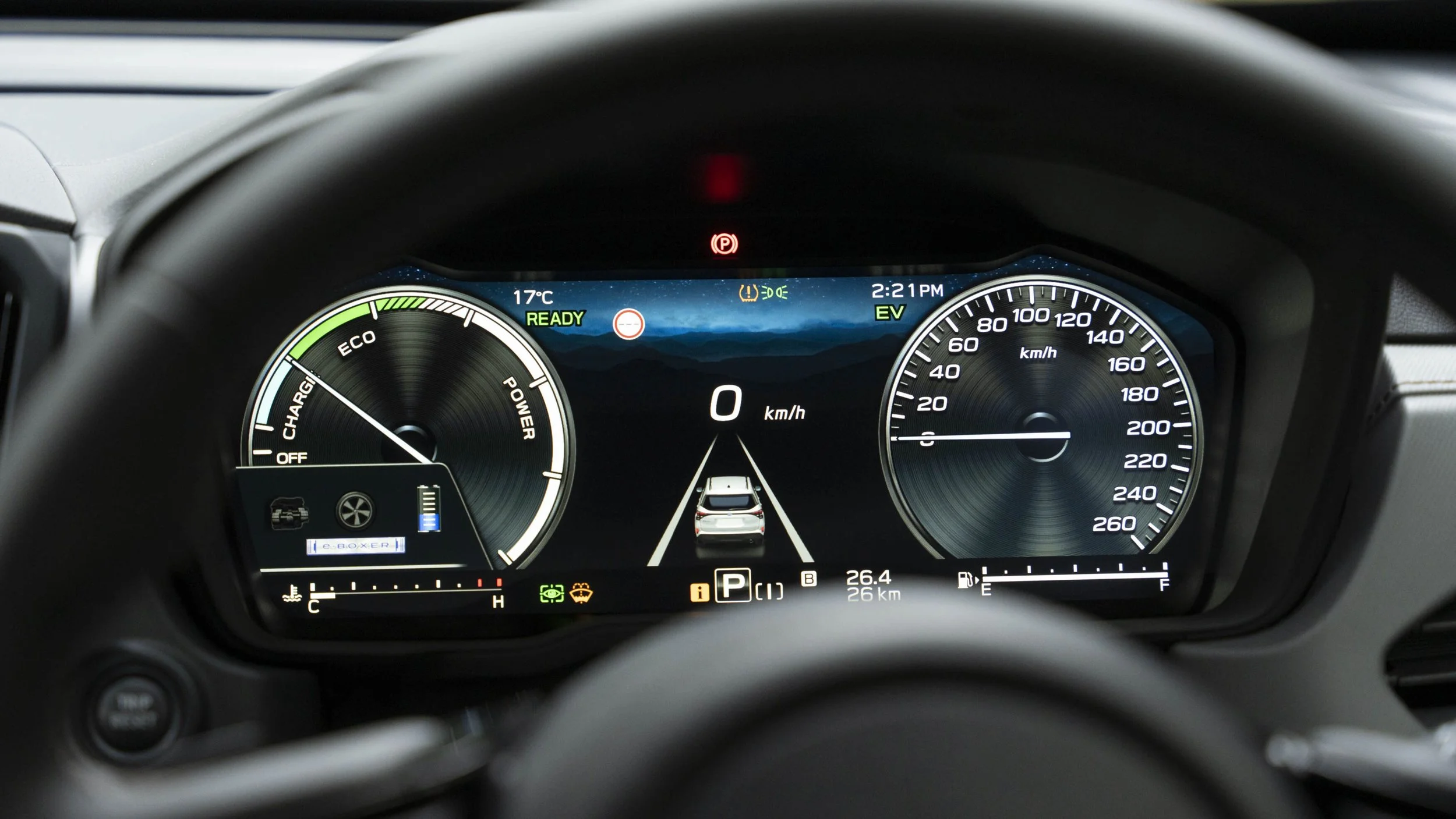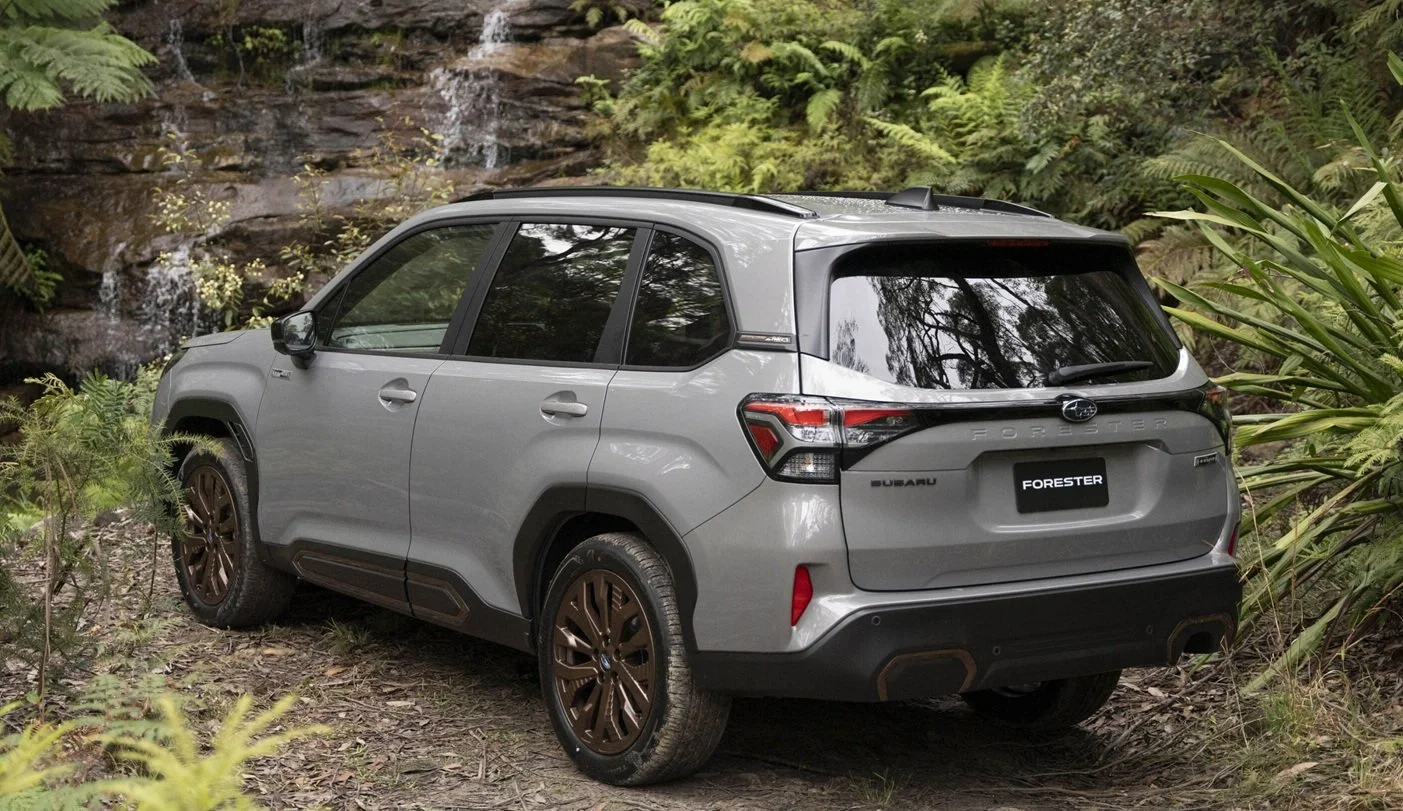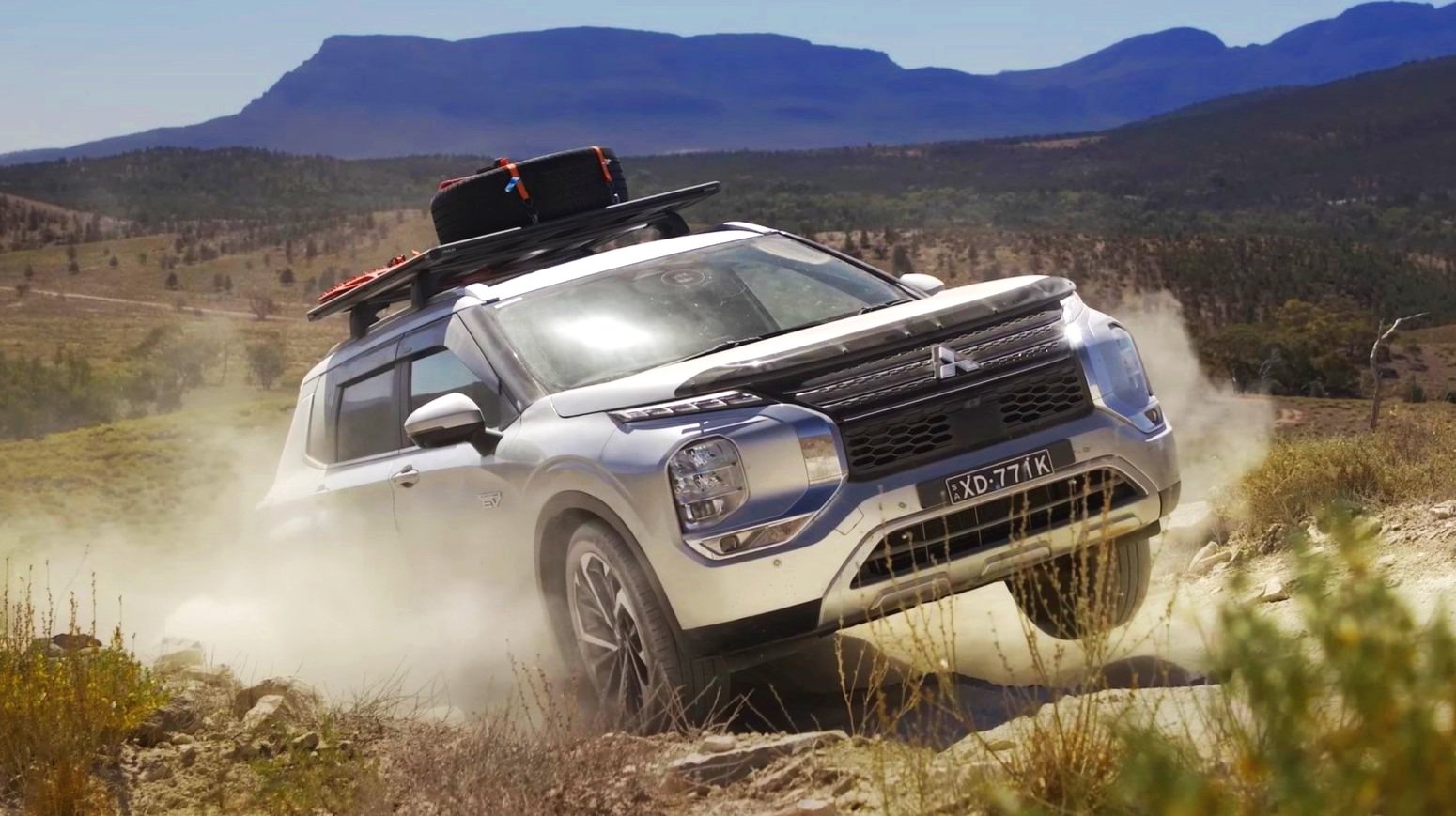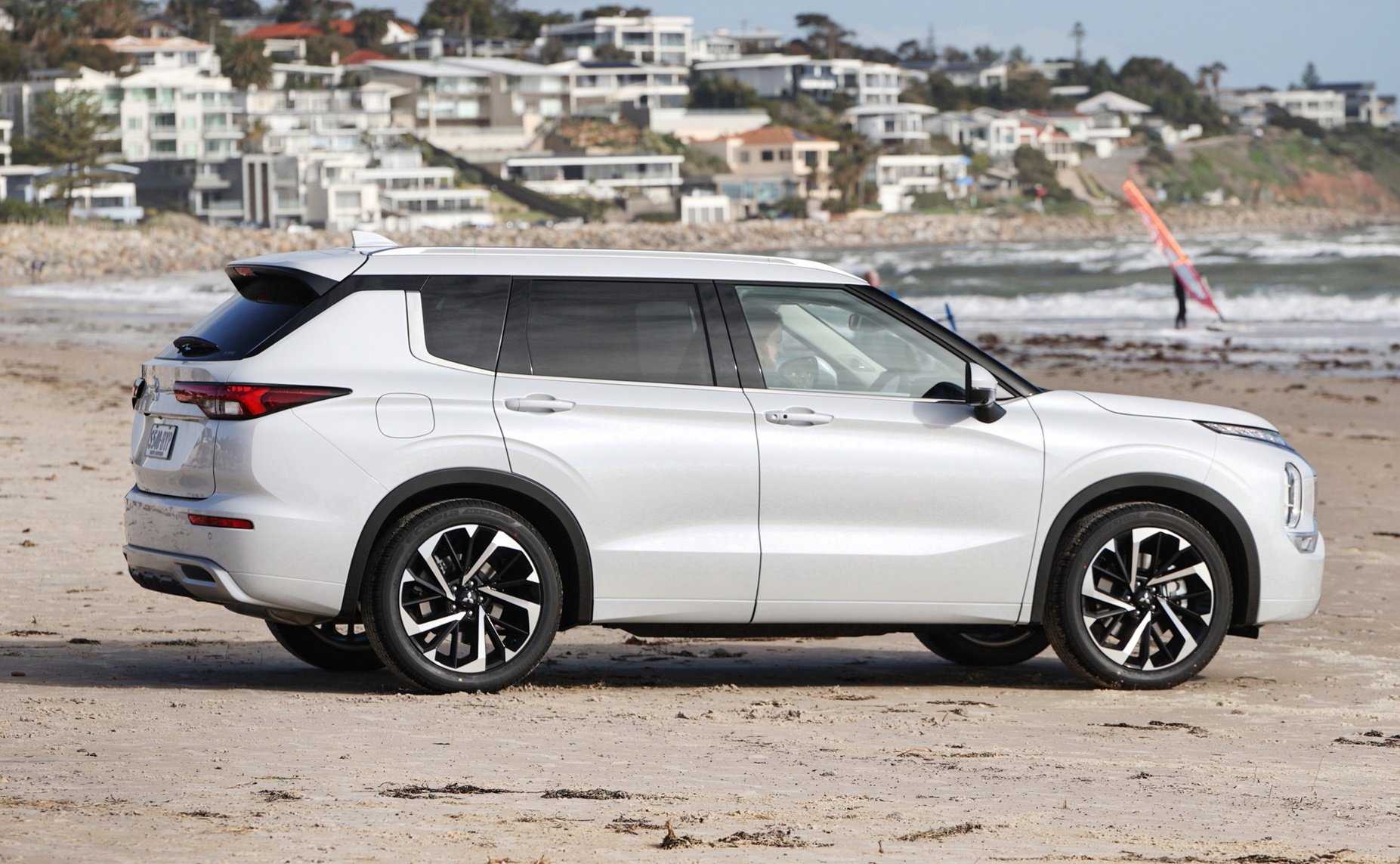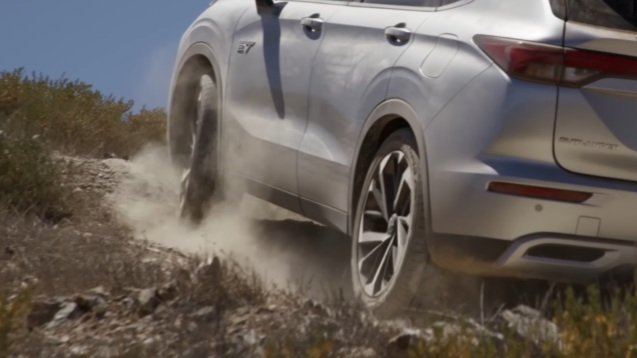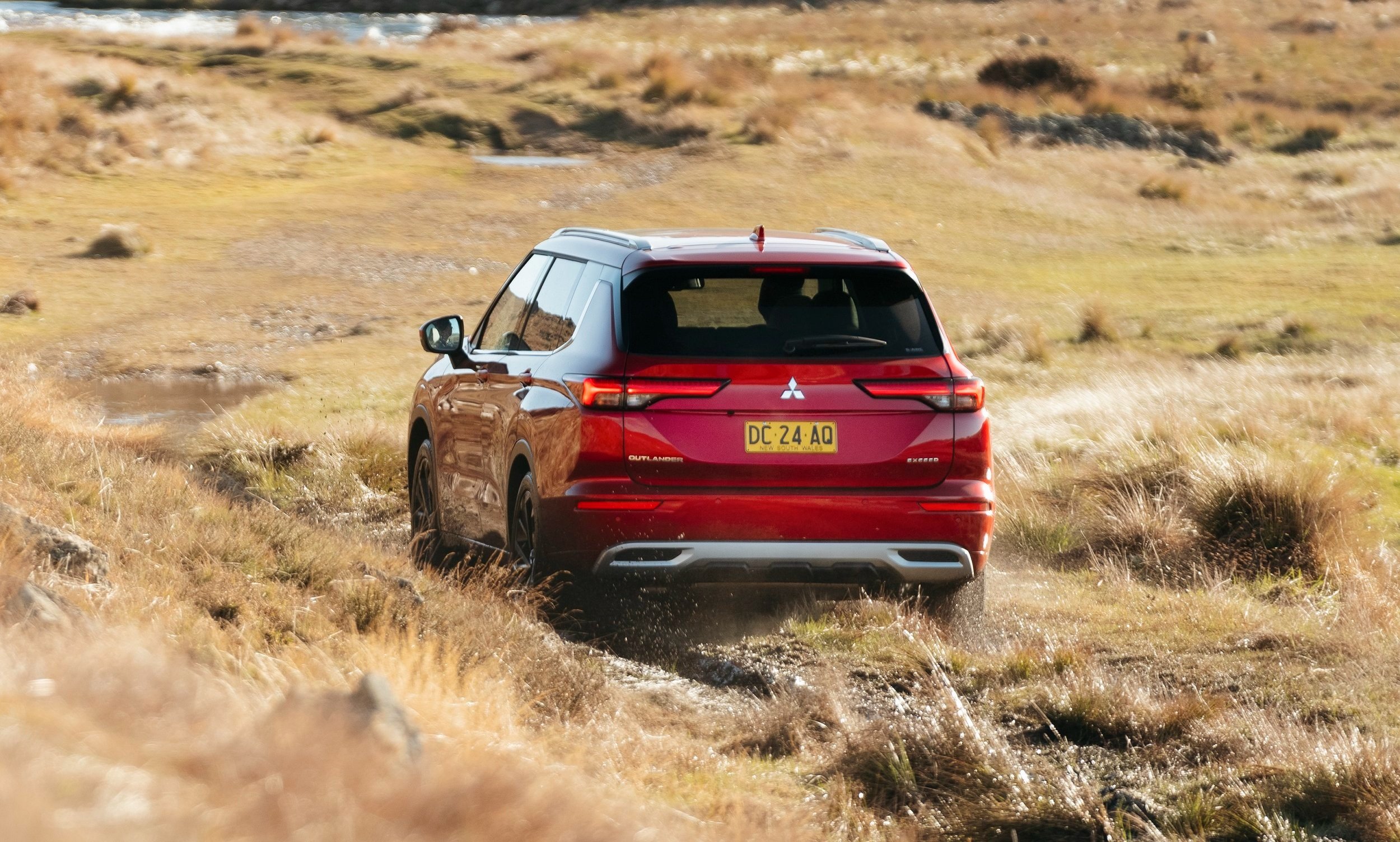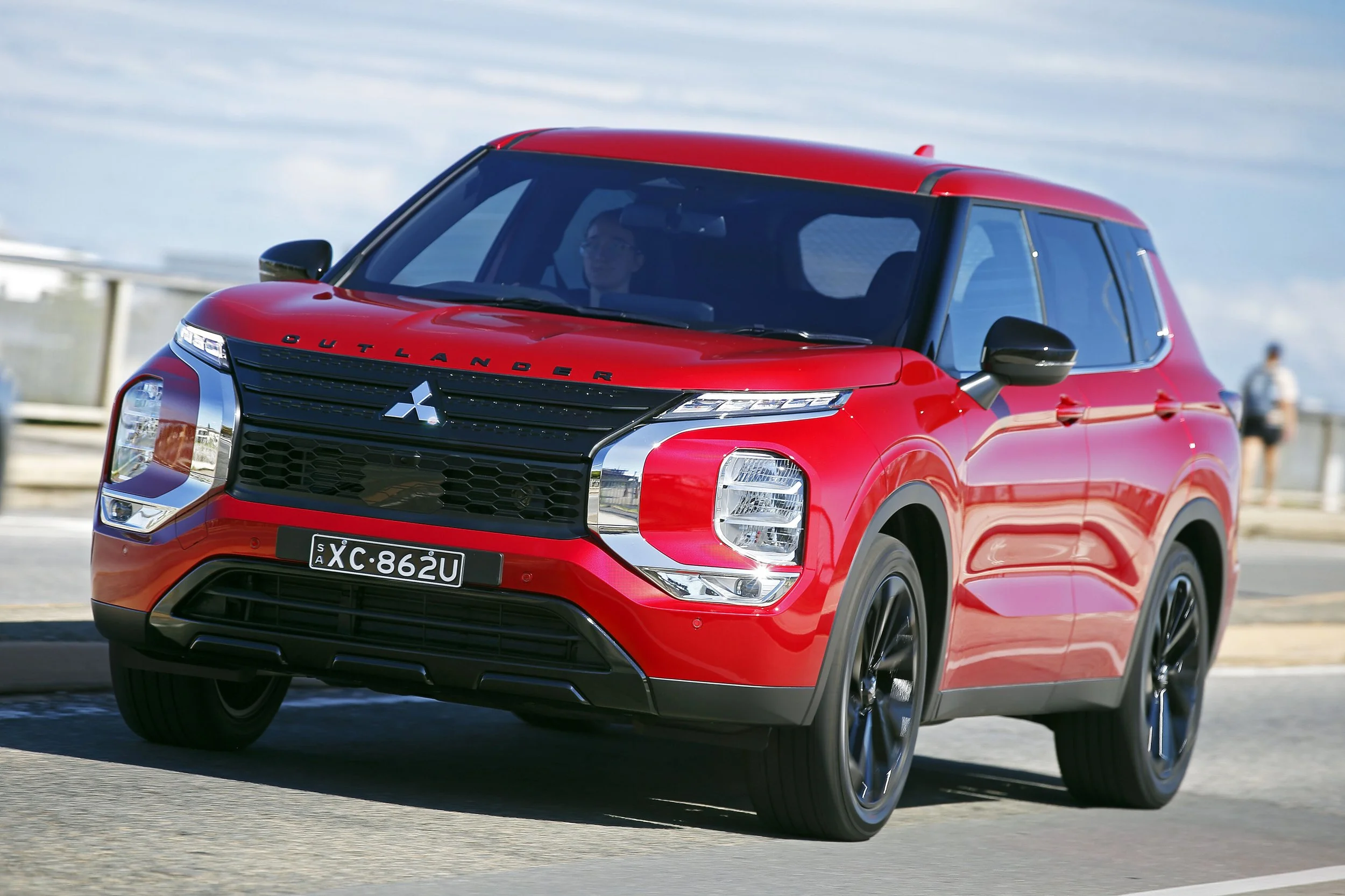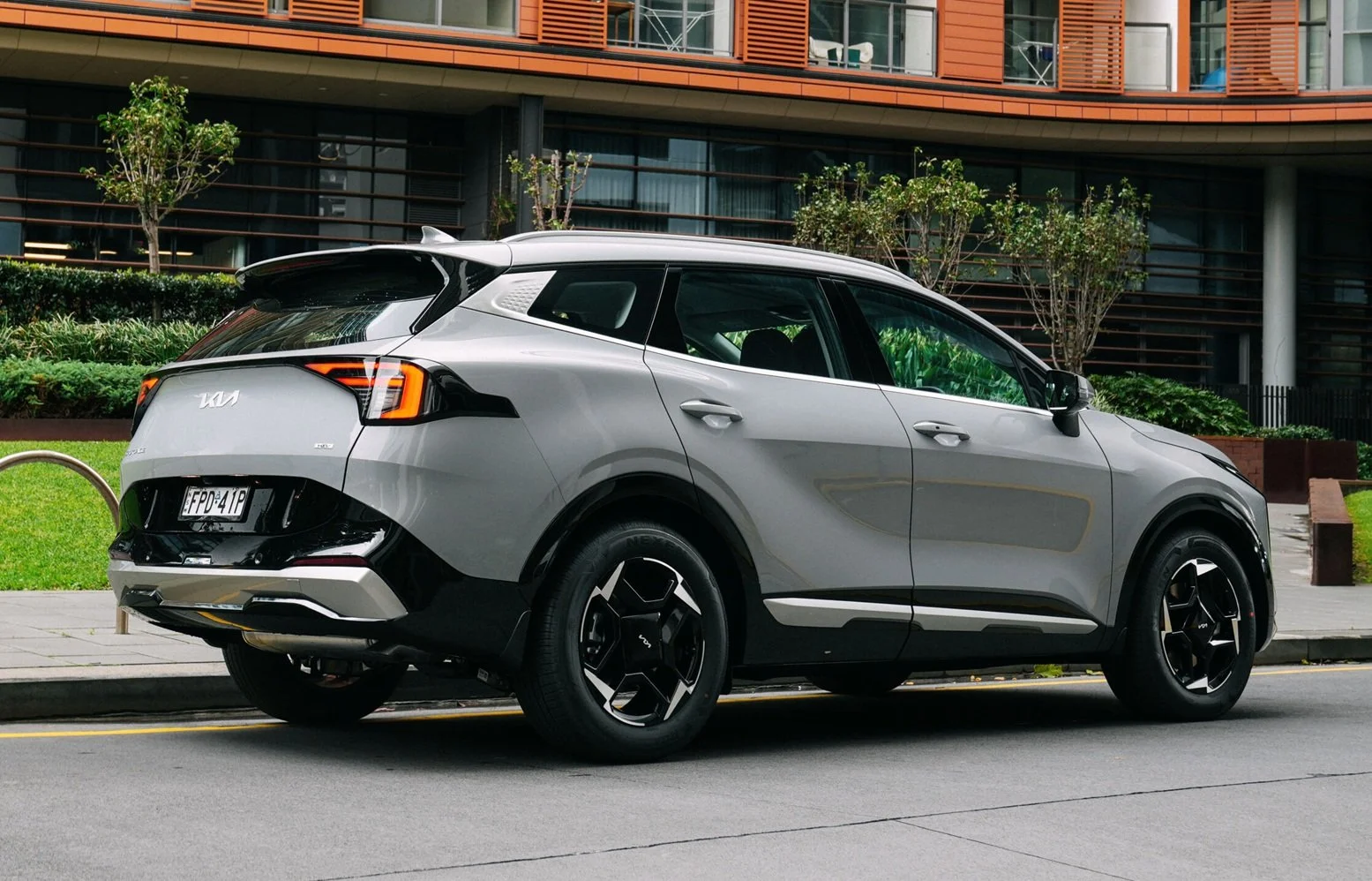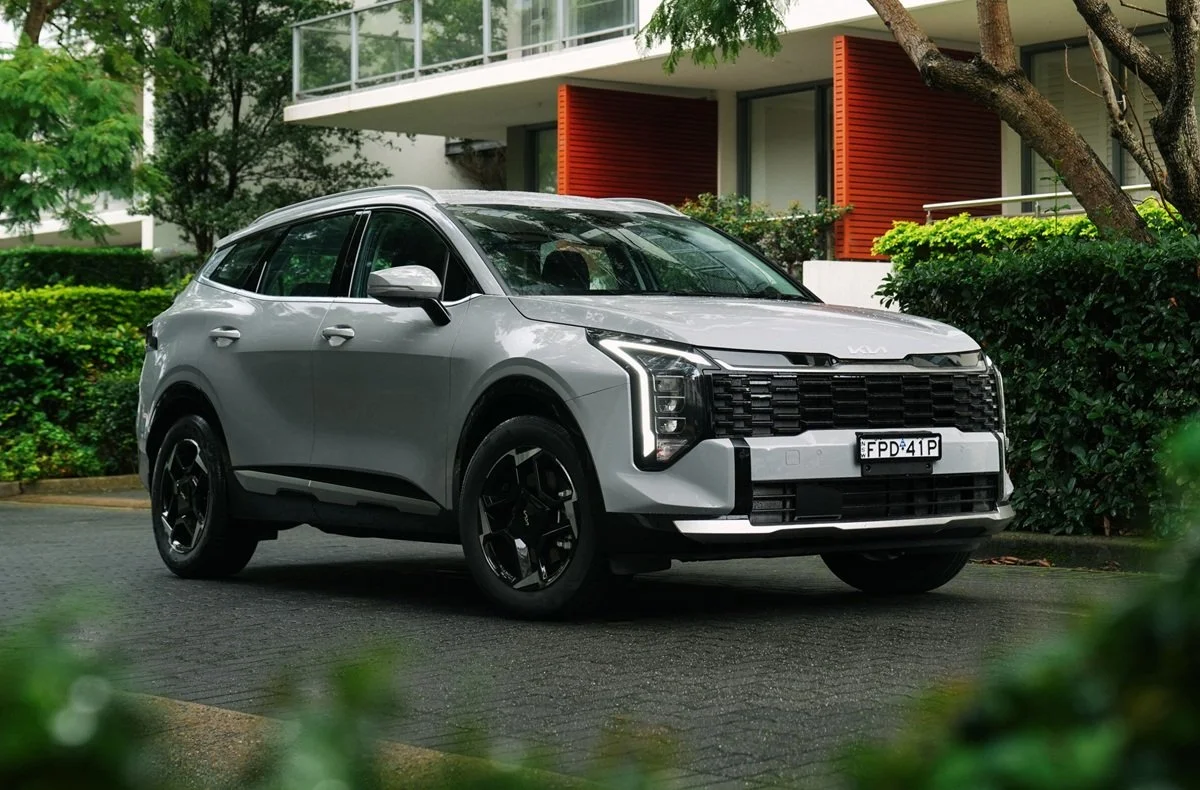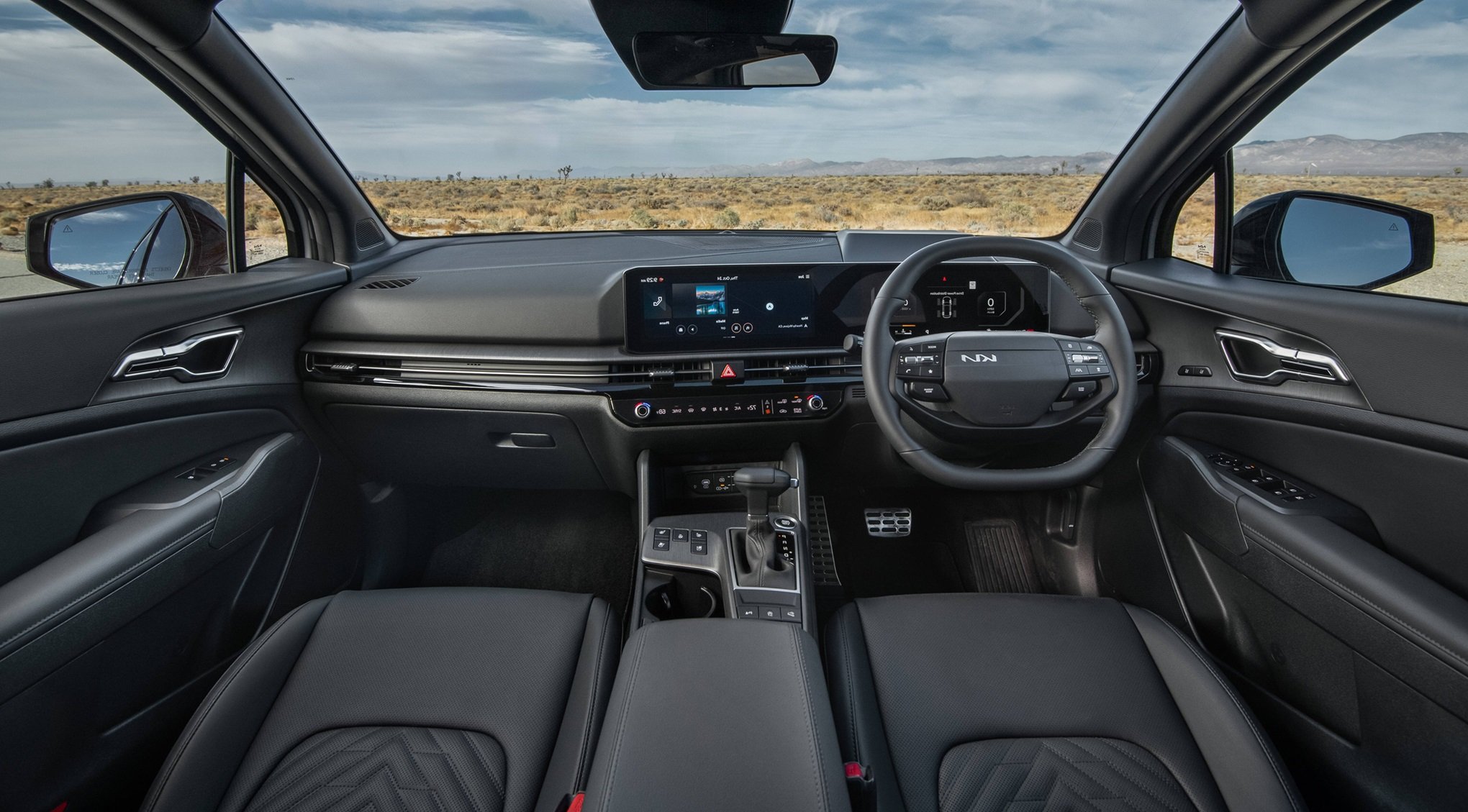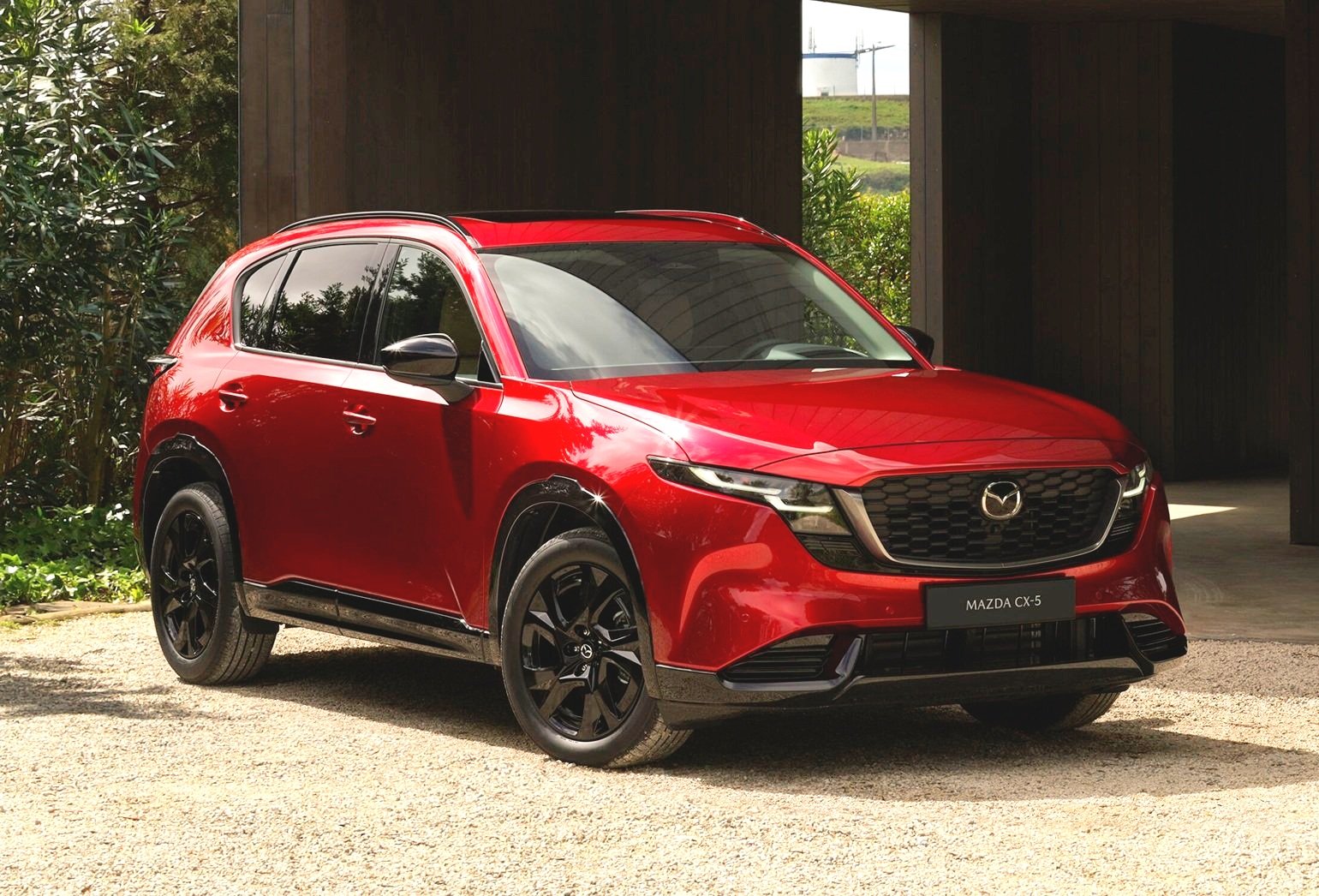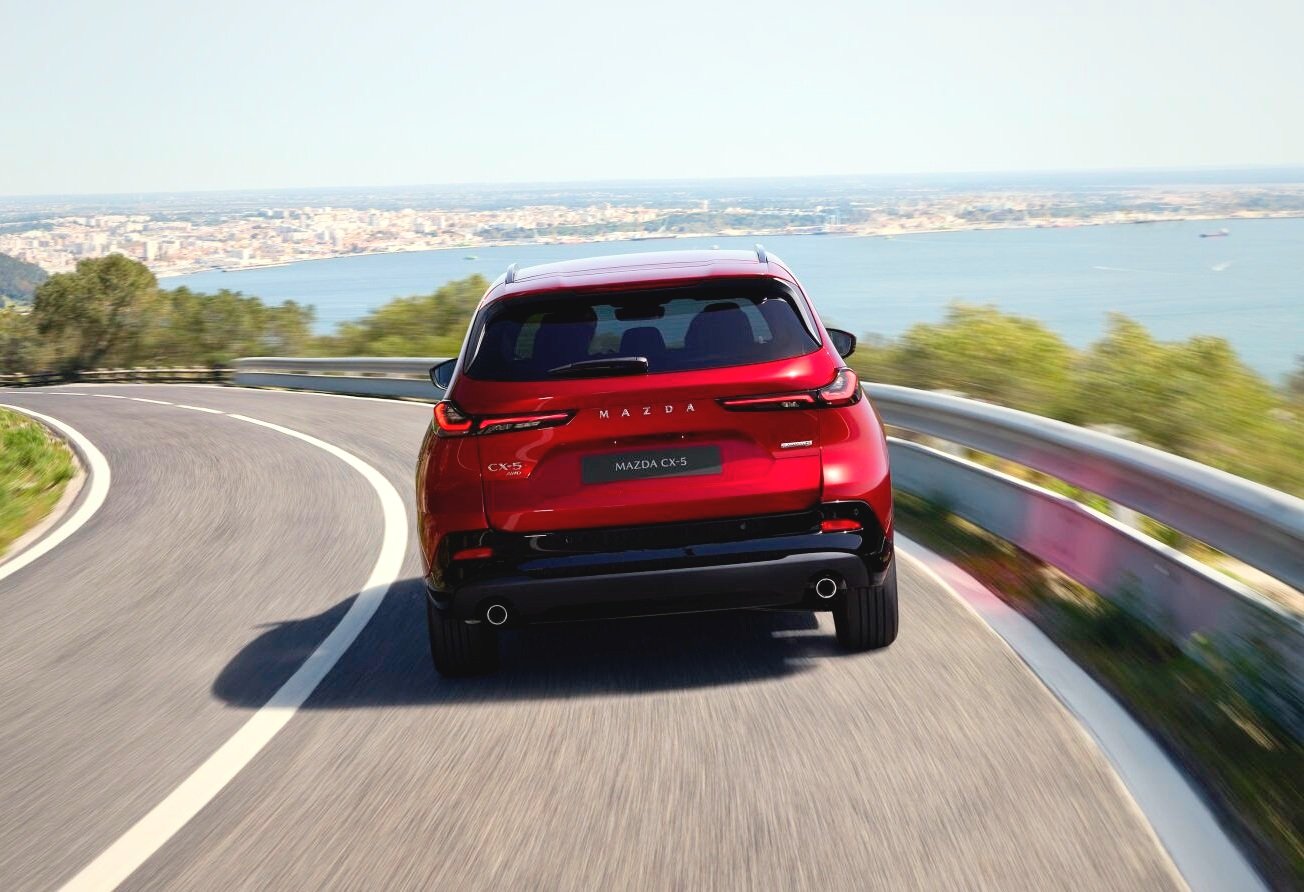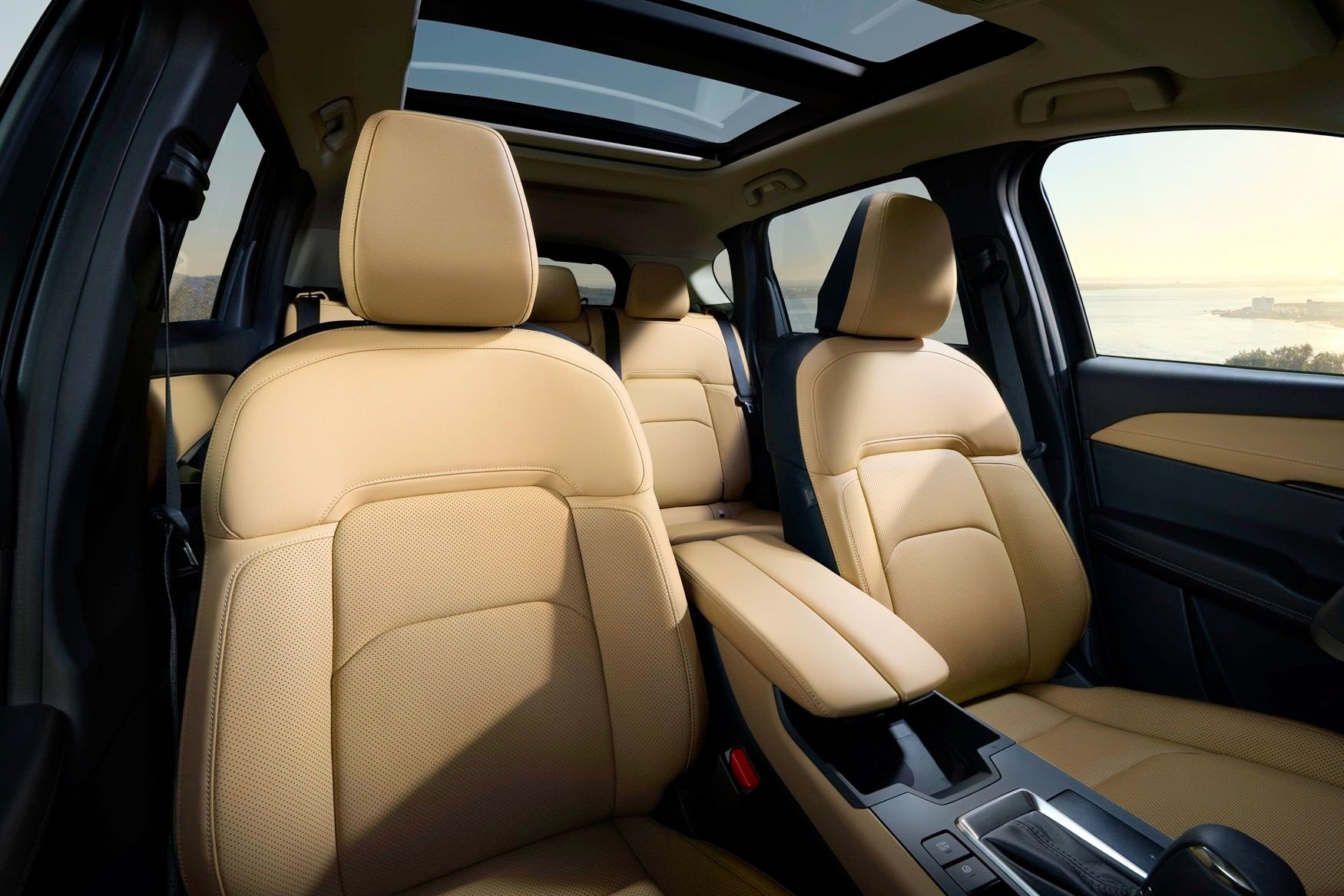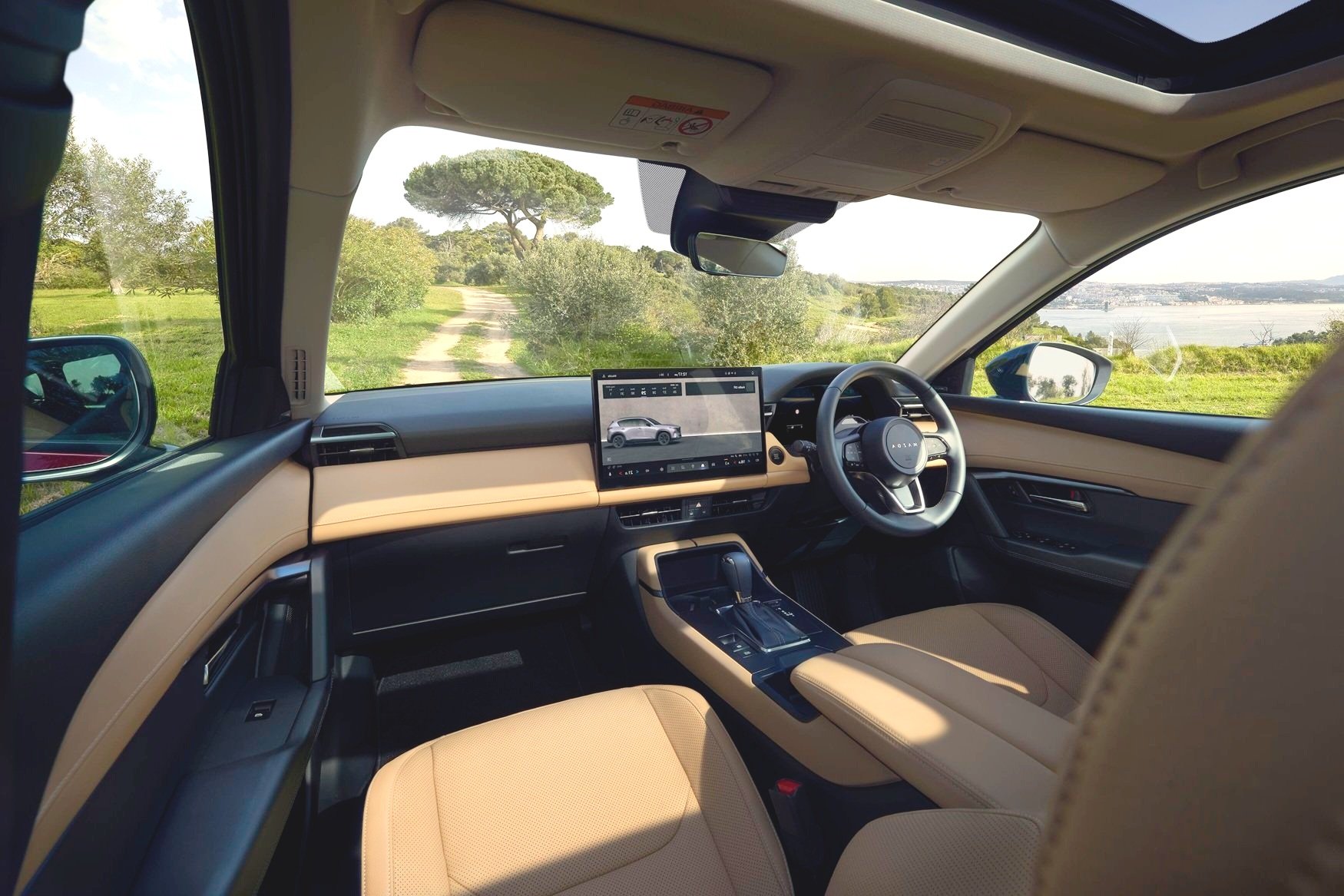Haval H6 review and buyer's guide
The Haval H6 is an affordable medium SUVs that will make buying your next new family car easier thanks to its compelling pricing and suite of features compared with established brands. But there are a few compromises you’ll have to make, depending on how you intend to use it…
The Haval H6 is a medium SUV now in its second generation from a brand that might be relatively unheard of if you’ve only ever bought from an established, mainstream Japanese or Korean brand in the last 10 years.
This revamped rival to the Toyota RAV4, Mazda CX-5, Hyundai Tucson, Kia Sportage, Subaru Forester and Mitsubishi Outlander has been worthy of criticism in the past owing to its lack of refinement and build quality. Not anymore.
It’s highly unlikely you’ve got the time or conviction to test drive the 15 most popular midsize SUVs in Australia, so this review will help you answer some of the most pertinent questions about the Haval H6 that you’re likely to have, so that you can make an informed purchasing decision.
The H6’s biggest initial appeal is its attractive pricing, but it’s much more than that. It’s the value it represents to you if you need a decent quality, practical, family run-about on a modest budget. But before we look at why the H6 represents good value, we need to see how it does or doesn’t qualify itself as a safe purchasing decision in terms of sales.
You want a vehicle that sells well in Australia because that is a symptom of a brand that has good reliability, decent customer support and offers respectable resale value long-term (even if it’s not necessarily the best of the best, because every mainstream vehicle depreciates).
Sales for the Haval H6 have actually been pretty good in the context of being a new-ish brand vying with the big dogs for sale in a very small, highly competitive market like Australia’s.
Haval itself managed over 26,600 sales with just three models in 2024, including its best-seller, the Jolion small SUV with over 14,00 units. These are sales that didn’t go toward Hyundai Kona (17,300), Kia Seltos (7700), Subaru Crosstrek (11,500), Mazda CX-3 (18,400), Toyota Corolla Cross (8,900) or Mitsubishi ASX (12,300).
The current Haval H6 sold nearly 9000 units in 2024, which was virtually the same number they recorded for it in 2023. But the older H6, prior to 2021, was the same one they’d been selling since last decade. That older H6, against the likes of established midsize SUVs like Outlander, Sportage and Tucson, the updated Forester and the venerable Mazda CX-5, the H6 looked second-rate. Until 2021, that is, when the then-new platform launched and turn the wick up on those established SUVs.
But this new, updated version vows to continue that trend with new another new hybrid option, meaning the new H6 looks set to offer compelling value against the known brands. We’ll get to that last point as well.
You can download the official Haval H6 spec sheet here >>
FEATURES & PRICING
LUX | $36,000 driveaway approx. | 2L turbo-petrol FWD
| $41,000 driveaway approx. | 1.5L turbo-petrol hybrid FWD
DRIVER
Column electronic gear selector
10.25” digital instrument cluster
4-way steering column adjustment
Auto electronic park brake + auto hold
Automatic rain-sensing front wipers
Multi-function steering wheel
Push-button start
Adaptive & Intelligent cruise control
SAFETY
Front-centre airbag
360-degree camera system, 180-degree ‘transparent chassis’ view
Rear parking sensors
Tyre pressure monitoring system (TPMS)
Follow me home lighting
Trailer sway mitigation
ISOFIX child restraints
Hill ascent / descent control
Adaptive cruise control
Collision Mitigation (lane: keeping, departure warning, centring and emergency)
AEB junction assist
Front Collision Warning (FCW) (pedestrian + cyclist)
Traffic sign recognition, traffic jam assist, ‘intelligent turning’, ‘smart dodge’
Driver fatigue monitoring
OUTSIDE
19-inch black alloy wheels
LED: headlights (auto), DRLs, high beam (auto), taillights, rear fog light
Door mirrors (auto-fold, heated)
Puddle lamps
Smart keyless entry
Kick sensing electric tailgate (manual tailgate: petrol Lux)
INSIDE
14.6-inch touchscreen with wireless Apple CarPlay and Android Auto
Bluetooth, DAB+, voice command
8 speaker audio (hybrid/petrol)
Front USB outlets x2, rear USB outlets x2
5oW wireless phone charger
Telematics (PHEV only)
Microfibre leather steering wheel
Comfort Tek leather seats
Driver 6-way electric adjustable seat
Front passenger 4-way manual adjustable seat
Dual zone climate control with rear vents
Power windows – auto windows + anti pinch (all)
Sun visors with illuminated vanity mirror
Auto dimming rear view mirror
Front 12v socket
Luggage area 12v socket
Cargo cover
ULTRA | $39,000 driveaway approx. | 2L turbo-petrol FWD
| $44,000 driveaway approx. | 1.5L turbo-petrol hybrid FWD
| $48,000 driveaway approx. | 1.5L turbo-petrol PHEV FWD
| $48,000 driveaway approx. | 1.5L turbo-petrol PHEV AWD
Driver
Driver seat memory + welcome
Driver seat lumbar support
Head up display (HUD)
Auto parking assist (excl. PHEV)
Auto reverse assist (excl. PHEV)
Heated steering wheel
Front parking sensors
OUTSIDE
Rear privacy glass
Panoramic sunroof
INSIDE
Front heated/ventilated seats
Front passenger 4-way power adjustable seat
Front stainless steel scuff plates
8 speaker audio (hybrid Ultra)
9 speaker audio (petrol Ultra, PHEV Ultra)
INTERIOR
The interiors of Chinese cars have come a long, long way from the early 2010s, which might’ve been the last time you even considered one.
In 2025, they’re on-par with the South Korean brands and are nipping at the heels of Mazda, Toyota, Mitsubishi and Subaru - without question. Nothing squeaks or rattles or creaks or clicks. But there are quirks.
First off, you have to accept the enormous 14.6-inch infotainment screen in the landscape orientation. It absolutely dominates the cabin and virtually every function of the vehicle, aside from what’s on the steering wheel, the small single row of HVAC buttons in the centre console, and the window switches on the driver’s door.
Clever interior design choices include the location of the cupholders on the RHS of the centre console, favouring the driver who’s statistically always going to be using the vehicle, meaning you don’t have to carry your hot sticky liquid over the smartphone cradle beside it. (Of course, this probably isn’t so much a design choice for our market and more a natural result of converting the vehicle to RHD and not any of the other interior elements.)
Having the transmission controlled by a steering column stalk means there plenty of centre console under-storage and no bulky transmission tunnel taken up by a driveshaft running down the centre, so no hump in the rear floor means less discomfort or annoyance for anyone using the centre row-2 seat or when stashing luggage in the footwell for those family trips away.
Fortunately for you, the driver, Haval/GWM has used actual buttons on the steering wheel (so revolutionary for Chinese cars) instead of the flat, backlit, translucent button panels used on the Jaecoo J7 and J8 which offer no haptic feedback and are hard to read in almost any morning/afternoon sun.
What you’ll need to familiarise yourself with is how to navigate the key controls within the touchscreen and how those steering wheel buttons operation various information on the driver’s display to figure out how to configure it the way you want things.
But here’s the kicker with the H6’s interior: there’s no particularly critical problems here. Everything seems reasonably intuitive, the various fixtures and panels and handles feel quite robust, and there are no glaring design failure that are going to make it worse or better to operate than any other mainstream midsize SUV option.
There are USB ports, bottle holders, HVAC buttons, a big screen that isn’t any more or less lagging in processing speed than any Korean or Japanese brand, the steering wheel controls are good enough and even the door mirrors are mounted on the door (not in the corner window glass) so visibility out is good.
This is one of the main reasons the H6 is so compelling, because it’s quite affordable and just as functional. It’s hard to fault it.
You’ve got over 2.7 metres of wheelbase in the H6, which is a fraction more than what’s available in the current (outgoing) Mazda CX-5 and there no glaring shortage of legroom in that vehicle until you start reaching NBA All-Star levels of height in which case: Why are you buying a medium SUV?
I'll help you save thousands on a Haval H6
Just fill in this form.
No more car dealership rip-offs.
Greater transparency.
Less stress.
ENGINE
The H6 has multiple powertrain options, which is kind of rare these days.
Many medium SUVs have gone to a sole engine choice or at the least kept hybrid as the premium option and a lacklustre petrol engine as the entry-level motor.
The H6 has a 2-litre turbocharged petrol engine making 170kW of peak power (up 13 per cent from the previous version) and 380Nm (up 19 per cent), which is one of the more powerful combustion-only engine options in the medium SUV segment.
So that’s 4 per cent more power in the H6 than a RAV4 hybrid (which is only available in hybrid now, as it turns out) but from a vehicle that is about $9000 cheaper than the Toyota. But we need to also acknowledge this is one of the most powerful petrol engine sin the entire segment, and not necessarily for the better.
The turbocharged 2-litre petrol engine in a Kia Sportage S is only making 137kW at just 4000 RPM, which is 24 per cent less power, making is much less stressed, consuming less fuel and putting less work through the tyres than the H6. After all, this is a family SUV, not a race car.
But happily the Sportage does make 9 per cent more torque, which is what you want for moving a 1.7-tonne SUV full of people and luggage through the suburbs. The H6 is already quoted at 7.4 litres per 100km on the wildly optimistic NEDC version of combined fuel economy testing. The Sportage S is 6.4L (15 per cent less fuel consumed), which will (eventually) break even with the $12,000 price difference.
Alternatively, there is the 1.5-litre hybrid which produces 179kW and 530Nm and offers a much more compelling powertrain option than the base 2-litre. It gets 110kW from the combustion side and 69kW from the AC electric motor which is driven by the battery pack. That 530 Newton-metres of torque could prove a bit much for normal driving conditions, or far too much in inclement weather conditions, or even just with a light dew - it just depends on how the traction control is calibrated.
The primary issue here will be the tyres which are generally from an inferior brand called Giti that offer a cheap, low-grip alternative to anything made by Michelin, Pirelli, Bridgestone, Toyo or Yokohama (to name a few of the quality brands).
The primary advantage of the hybrid here is that it’s offering about 40 per cent more torque than the combustion version, meaning it’ll be a much smoother vehicle to overtake with, to accelerate away from the lights in and to drive in general with a full passenger manifest and cargo bay. You’ll just need to get better rubber.
Keep in mind that the hybrid is going to be better suited to city commuter traffic where the battery is afforded lots of opportunity to regeneratively brake and recover kinetic energy when stopping for traffic lights, turning corners and braking in general.
Freeway driving is going to use more of the combustion side of the powertrain, generally speaking, because usually hybrids don’t have a battery big enough to hold enough electricity to drive the vehicle for long periods of time before being recharged. But in the hybrid, you are at least able to use that 530Nm at as low as 1500 revs, according to Haval Australia.
There is also going to be a plug-in hybrid variant of H6, which will use a 19kWh LFP (lithium-iron phosphate) battery pack, producing either 240kW or 268kW depending on whether you choose the 2WD Ultra or all-wheel drive Ultra respectively. That 19kWh LFP battery is made in-house by GWM (Haval’s parent company).
The AWD Ultra PHEV be producing 760Nm of torque, according to GWM Haval Australia, which would make it, technically, the most powerful medium SUV on sale in Australia. The front motor makes 80
What’s important to be aware of here is that going for the two-wheel drive version, and putting out 530 Nm of torque through the front wheels of the 2WD PHEV is going to put a lot of wear on those front tyres which are already also doing the steering and braking.
Given how well these systems are managed in modern vehicles thanks to traction control, stability control and so on, it’s hard to imagine Haval allowing it to behave like some untamed Bronco.
If you were to give the PHEV full throttle from the lights in the pouring rain while taking off on tram tracks, then year, you’re going to get wheelspin, but in any other moderately benign acceleration scenario it’s probably going to be quite smooth and make getting up to speed effortless.
All variants run on standard 91 RON petrol with a 61 litre tank for the 2-litre combustion-only and hybrid versions, and a 55-litre tank for the PHEV variants.
TRANSMISSION
The combustion-engine H6 is uses an in-house 9-speed dual-clutch transmission (DCT) and considering the love/hate relationships DCTs have had in general over the last decade, it’s an interesting choice for a brand which is still, arguably, in its adolescence in the Australian market.
A conventional planetary/epicyclic auto with torquer converter might’ve been the more prudent choice, but if the integration and R&D has been done with due care and competence, there’s no immediate suggestion it won’t be good enough.
Having said that, Ford and Volkswagen, mainstream brands in their own right, managed to do a terrible job integrating their versions of DCTs to their popular models, and then Hyundai-Kia came along and showed everyone how to do a dual-clutch properly. Perhaps Haval is about to do the same at a point where DCTs are being slowly dropped from Hyundai and Kia vehicles.
The DCT in the H6 is probably going to be quite robust and sporty in its gearchanges, because this isn’t their first DCT. In 2022 (just three years ago) the H6 had a 7-speed DCT and that vehicle was reasonably popular with no clear evidence of widespread failures. But it remains to be proven given this H6 has an updated transmission - but it’s rare the model ever gets made worse by a second iteration (because the faults of the first version usually get fixed).
What does remains to be sampled however is how it goes about using 9 gears for ordinary driving. If you’re full of groceries and kids and prams, while driving up hill, it might find itself hunting for the right gear as you squeeze the throttle and wait for some power to come through to climb the ascent.
Having only 380Nm to push the vehicle up a hill or suddenly start overtaking, this could confuse the DCT somewhat, unless of course you’re not the kind of driver who does much overtaking or putting your foot down.
The 1.5L hybrid uses what Haval calls a “Dedicated Hybrid Transmission (DHT)”, which basically means a 2-speed continuously variable transmission. This is the same transmission from the previous version, which should not sound like “they haven’t bothered doing anything innovative”, it should mean “it’s not broken, therefore they haven’t tried to fix it”.
In terms of the driveline, Haval says in particular about the plug-in hybrid, that the vehicle’s brain
“…adapts to changing conditions in just 10 milliseconds — 100 times per second — delivering optimal performance, traction, and efficiency”.
So it’s going to be very rare that you do actually experience wheelspin even in the msot powerful model.
However, be aware that the rear motor is not being engaged to drive the rear wheels during low-load highway cruising, where the vehicle defaults to front-wheel drive.
TOWING
Good thing there’s a towing capability with this vehicle, because it already has so much going for it that to lack a towing specification would be a big disappointment.
The ordinary petrol and base hybrid variants are going to be the best option if towing is a likelihood for you. You get a 2000kg braked capacity for the Lux petrol and Lux hybrid, both in 2WD.
Given the maximum kerb weight of a H6 is 1980kg in the PHEV AWD and gets as low a 1630kg in the petrol 2WD, it’s highly unlikely you’re going to get into a situation where the combination is dynamically unstable. But in the latter, the front-drive petrol is about 400kg lighter than the notional trailer, so you’ll want to drive conservatively (which you would want to be doing regardless).
Even if you were to, hypothetically, put a 2000kg trailer on the back of your Haval H6 petrol, remember that you’re only using the front two wheels to brake, steer and accelerate, so this is not going to be an inherently balance towing scenario - especially in an emergency braking situation. That’s not suggesting the H6 is necessarily inferior, it’s more of a warning to tow with these considerations in mind. Check out our Ultimate Towing Guide >> for more helpful towing advice.
At least with AWD in the PHEV, you’re using all four wheels, in most cases where wheelspin is likely or additional performance is required (demanded by the throttle).
What you’ll also need to be wary of is the H6’s what towball download limits that apply. The towball download limit for petrol variants in the old model was 200kg and 150kg for the old hybrid variants.
While it’s highly unlikely it will be anything else in the upgrades model, the limits haven’t been officially published by GWM Haval Australia as yet.
FUNCTIONALITY
The boot of Haval’s H6 operates just as well as any other medium SUV - and that’s interesting because it doesn’t really put a foot wrong, so to speak.
There are USB ports littered around the cabin, there’s good storage under the centre console and there are the typical cupholders in said centre console, the central fold-down armrest in row 2 and the requisite door bins with bottle holders. All pretty decent in their respective, humble operation.
But in the luggage compartment there isn’t any particular fault you can level at the H6. It doesn’t have any particular quirks of importance to mention. There’s a cargo blind that works like any other, there’s a couple of sloped wheelarch moulds like any other medium SUV in this category (which are all equally annoying when it comes to loading up the boot for a trip), and you get (according to the Haval H6 press kit) a matching full-size spare under the floor for petrol 2WD and Lux hybrid 2WD, or a so-called ‘tyre repair kit’ for the rest of the Ultra variants in either petrol, hybrid or PHEV.
Having a can of tyre repair goop in the boot is not going to be very helpful if you get a sidewall puncture in a regional town when the local tyre shop closes at 5pm. But you can solve this issue, if you’re planning on lots of regional travel, by fitting a roof rack with a basket and fitting a matching spare up top, or getting a cargo barrier/cage in the boot and fixing a matching spare in the back.
In the petrol H6, you’re looking at a potential 1485 litres of cargo space if you drop the rear seats, or 560 litres with row 2 deployed. That’s up there with the highest cargo capacities in this medium SUV segment, beating the current (outgoing) Mazda CX-5 with 438 litres, Mitsubishi Outlander on 485L, and the Subaru Forester with 498L, and falling short of the Hyundai Tucson on 549 litres, Toyota RAV4 on 580 and the Kia Sportage on 586L.
Thanks to the over one metre of available width and 960mm of cargo floor length, there is plenty of physical space for big, bulky prams, large suitcases and various nick-nacks for weekend roadtrips away with the family.
But if you’re planning to do lots of frequent longer-distance driving with the family in-tow, you’ll want to consider a roof rack system, and possibly that towbar for light-trailer duties to extend the functionality envelope of the H6 - in the same way you’d have to with any of the other medium SUVs.
Top tether anchor points are attached to the middle of the row 2 seatbacks, as opposed to be down the bottom and barely within reach on some vehicles, and there are two pairs of outboard ISOFix anchor points as well.
As for driving functions, it is unfortunate that Haval has missed the opportunity to put temperature buttons on the dashboard facia below the enormous touchscreen. But at least the various vehicle driving features like cruise control are on the correct side of the steering wheel (the right-hand side), with the volume and entertainment-related buttons on the left-hand side.
As for operating the H6 itself, it’s going to take some time to adapt to where everything is in that big, bright landscape-oriented touchscreen, and then you’ll want to try to make those part of your start-up procedure, as with any new vehicle.
It’s also worth having a go in the dealership connecting your phone and playing around with these systems before agreeing to buy it. Do this on your test drive day and try to approach it with an open mind for what faults or quirks you can learn to live with (because there’s no such thing as a perfect car).
Then see if any of the others, like Forester, CX-5, Tucson, Sportage, Outlander or RAV4 do those things better or with less frustration. This also extends to the H6’s so-called safety features which are commonly referred to as ‘driver assistance’, yet rarely live up to their name.
You’ll probably want to find out how they can be turned off (and if it’s relatively easy to do so), and/or how good or bad they are for you specifically to use. The reason for putting the onus onto you, the prospective consumer, is purely because these things can be highly subjective. Some people are fine with these systems like lane-centring and keeping, speed warning, driver attention monitoring and blindspot detection.
Others can absolutely detest these features for their typically overbearing nature, in which case, you’ll want to find the medium SUV with the least intrusive systems, which can be hard to do, admittedly.
DRAWBACKS
Unfortunately, in the pursuit of adding yet another driver’s digital screen display, Haval has ditched a binnacle or shroud of any kind to protect said screen from glare, reflections and direct sunlight, which there will be plenty of because it has a dual-pane panoramic sunroof in Ultra variants.
Someone in the interior design department has also taken it upon themselves to deny you the ability to adjust the cabin temperature on the HVAC system using a button. Instead, you’ll be diving into the touchscreen menu in some capacity, rather than just a couple of quick presses of a button.
The use of a so-called tyre repair kit as a puncture solution is pretty poor for a family SUV that’s supposedly going to clock plenty of suburban kilometres and occasional region travel. But this is also the trend among any hybrid vehicle, save for the Hyundai Santa Fe. You can mitigate this problem if needs be by buying yourself a full-size alloy and tyre and fixing it to either a roof rack basket system up top, or strapping it down behind a cargo barrier in the boot - both are inelegant solutions, admittedly.
The other drawback to consider, if only for the sake of making thoroughly informed purchasing decision, is that the H6’s low price does mean that your resale value will be less than the equivalent Toyota RAV4, Hyundai Tucson, Kia Sportage, Mazda CX-5, Subaru Forester or Mitsubishi Outlander.
MAIN COMPETITORS
HYUNDAI TUCSON
Tucson is Kia Sportage’s twin beneath the skin; same SUV bones, but different design and execution. Tucson focuses more on affordable, accessible performance and practicality over more prestige undertones.
It’s important you try both models to figure out which one suits you. You might prefer Hyundai’s centre console layout and where they put things, as well as how easily you can do a particular task like adjust the air-con or access the stereo functions.
A base Tucson has a heap of standard equipment: heated power mirrors, rear parking sensors, wireless phone charging, leather steering wheel, LED indicators and daytime running lights, auto-headlights, dual row-two USB ports and A/C vents. The ‘poverty-pack’ is anything but poverty.
Tucson also gets a full-size spare, and an active al-wheel drive system that is almost always sending some drive to the rear wheels; ideal for wet roads, steep hills, sandy or gravel beach roads or slippery makeshift grass carparks in regional areas. You can also get N-Line versions with sporty styling and a sharper performance edge.
SUBARU FORESTER
Forester is a soft-roading champ that offers wheelspin-free driving to ensure you get out of soggy campsites, steep driveways and sketchy gravel tracks where grip is compromised.
What it lacks in nostalgia of the turbo-charged XT of old it makes up for with a 1kWh battery and electric motor as part of the powertrain that now offers more grunt than the combustion-only version.
Unlike competitor on-demand AWD systems, all four of Foresters wheels are working at all times; power is split evenly between each, so available grip is never exceeded. The CVT transmission is also much-improved over previous models, with minimal drone and super-smooth response to changing driving conditions.
Plus you get a deep, wide luggage space, a nice tall cabin roof which is great for very tall people, and a full-size spare means you’re never limping home at 80 in the rain on a busy freeway. Good build quality, great customer service from Subaru, and a long list of safety features as standard.
MITSUBISHI OUTLANDER
Outlander offers the best of both the large and midsize SUVs. If you need a seven-seater on a tight budget, it offers three rows but in modest profile, without a soaring pricetag. Outlander is the only medium SUV that can offer this emergency third-row seating and it’s the only one to also offer it as a plug-in hybrid option, which the H6 cannot do.
The 2.5-litre petrol engine is naturally aspirated, so it’s good enough without being punchy, and frugal enough without being ultra-conservative on the fuel-consumption front. But it does have a very clever drivetrain which is as close as you’re going to get to a Subaru Forester for soft-roading capability on gravel roads, sandy or grassy embankments or getting out of soggy campgrounds on long weekends.
If you’re unlikely to go far off sealed roads, the on-demand all-wheel drive system of Mitsubishi’s is decent enough to get you through most light mud, wet grassy carparks and steep, slippery driveways or take-offs at the lights. The brochure talks a big adventure game, but it’s not a proper 4WD. Mitsubishi also offers a 10-year warranty.
Legroom is good in the front and second rows, but it’s kids-only in row three (but no child restraints for row three, so older kids only up the back. You can also have Outlander with
KIA SPORTAGE
Sportage is ideal for families that do a bit of everything, but not all at once, such as occasional camping, frequent regional trips, commuting or perhaps doing sales, consultancy or client-related travels on a weekly basis.
If you need a generous luggage space (543 litres), full-size spare to keep you fully mobile and ample legroom for growing kids still in booster seats, Sportage is a great balance between practicality, space, comfort, affordability and frugality. There’s also a hybrid option that is better value than a RAV4 hybrid.
Not only is the payload up to 460kg for suburban-friendly supermarket runs, and weekends away, it’ll also function as a comfortable long-distance cruiser.
Consider a Hyundai Tucson if you like the Sportage’s size but not the execution, because they’re the same fundamental platform shared across both the brands with different bodies and interiors - same powertrains, too.
MAZDA CX-5
CX-5 is one of the nicest midsize SUVs to drive thanks to a punchy 2.5-litre turbo-petrol engine, a beautiful cabin that’s quiet to sit in and five seats with good legroom ahead of a decent luggage space in the boot (but it is among the smallest in the class at 438 litres).
CX-5 is extremely popular, meaning you’ll get good resale value at the end of your tenure, and parts are affordable compared with the ‘prestige’ German SUV you might consider instead of a top-spec CX-5 Akera.
Most models offer good towing potential, with either the optional diesel or standard petrol powertrain. The 2.0-litre petrol is a good budget option.
Be aware of the space-saver spare if you’re a regional driver. Mazda customer service is OK and they’ve generally got good stock levels, so delays shouldn’t be long. The new model does away with the old rotary dial to manipulate the infotainment screen in favour of conventional fingers.
CONCLUSION
The Haval H6 is a very good-value vehicle from a car company that has come a very, very long way in a short period of time.
The older Haval models were rough around the edges. They lacked the crisp, silky finishing touches we demanded from bigger brands that are now in a struggle for relevance as the new H6 brings hybrid and plug-in hybrid powertrains at a much more compelling price.
This has been such a short turnaround that it might leave you hesitant to jump on board such a relatively new brand to the Australian market, or at least not as established as the likes of Toyota, Mazda, Subaru or Mitsubishi, or the Korean brands Kia and Hyundai. That’s fair enough if you’re not quite ready to buy Chinese just yet.
It’s worth considering here that so much high-tech stuff we buy today is already coming from China, a country with its own highly successful space program, making some extremely high-end technical components, machinery and equipment, and even the manufacturing equipment to make other things. Their transmissions are in-house, their engines are in-house, and their batteries are also in-house.
When was the last time you wondered where your powertools were made, or your computer, your French-door fridge or the steel holding up the gymnasium at your kids’ school? Does it really matter where your next new car is built? (No judgement, you’re allowed to care.)
The H6 offers a substantial power output compared with its Japanese and Korean rivals, and the interior is just as good (seemingly) as anything from Nissan, Mitsubishi, Hyundai or Subaru. And you certainly cannot suggest, rationally, that any of these are going to be more practical for the daily running around most familis need to do for around $50,000.
The only profound difference for the H6 is it won’t have as good a resale price in 5-7 years’ time, but it’s also much closer to that ballpark $50,000 pricetag than its aforementioned rivals.
If money matters to you, there aren’t many robustly inarguable reasons not to put the Haval H6 on your shortlist and take a test drive.


